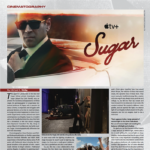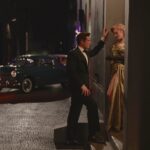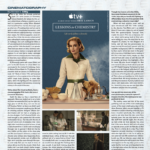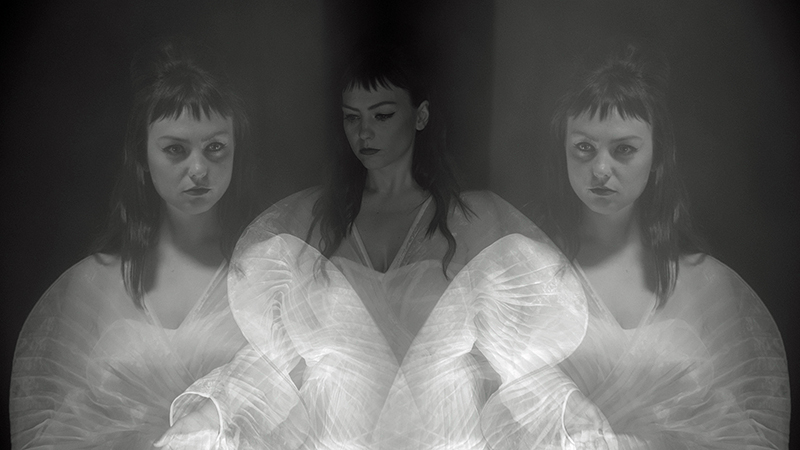
The Making of Angel Olsen’s Music Videos, All Mirrors and Lark
Recall a time when recording artists, record labels and even music fans understood that cutting music videos was the most successful way to market and message a musician’s many creative impulses. Music videos, at the height of their popularity, rivaled the artistic merit of the very tunes they were meant to promote.
Two recent videos by folk/rock/indie recording artist Angel Olsen, who has teamed with longtime collaborator, director and cinematographer Ashley Connor, may be helping to revive the vibe, if not lost art, of a bygone era.
Olsen’s new studio effort, All Mirrors, released in early October 2019 via the Jagjaguwar label, has spawned All Mirrors and Lark, two stunning examples of modern video making. Given the pacing, presence and overall style of the work, these videos could, perhaps should, have been made in 1985. “That’s a high compliment,” Connor tells PLSN.
At press time, views on YouTube for All Mirrors and Lark have crept up to a combined total of nearly 900,000 clicks. This is prior to Olsen hitting the road to promote All Mirrors on a North America/European tour that’s scheduled to end in the U.S. in mid-April 2020.
Those familiar with some of Olsen’s older videos might be surprised by how positively transformed the singer appears — and acts — in front of the camera. Silvery, glam-y wigs, prudish purple Elizabethan costumes and 1,000-yard stares have been replaced with a barefoot, defiant, scary and sexy Olsen in flowing dresses, transitioning into a range of emotional states before our very eyes. It’s Angel (and a few demons) unleashed.
It isn’t just Olsen’s camera persona that’s changed, however. All Mirrors is certainly orchestral and synth-heavy, with the faint traces of Eastern music, ambient Eno, Kate Bush and British ‘80s techno pop. “In her early days, people described her as ‘sad girl,’ ‘folk music,’” says Connor, who was nominated for an Independent Spirit Award for her cinematography for the movie Madeline’s Madeline. “To continually challenge your audience that loves your music for a certain reason and make them go on a journey with you is very bold and something I respect about her.”
Perhaps because it was born of pain and growth, as well as romantic breakup, All Mirrors and its corresponding videos, feel like personal breakthroughs — musically, emotionally and artistically. “Ashley and I have worked with each other for a pretty long time,” Olsen tells PLSN. “We have a way of speaking to each other, and I have a trust in her. She allows me to see shots as we go along so I can get a better idea of how things are being captured and what I need to work on — emotively speaking. Other directors do not allow me such freedom and, therefore, the trust and the confidence in many other videos or video materials is noticeably different.”
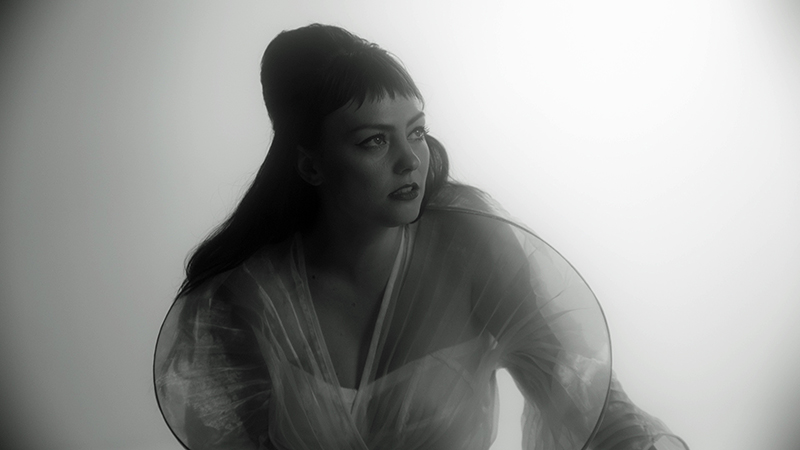
All Mirrors
Although it’s become commonplace in the 21st Century, black-and-white pop music videos were a rarity in the Golden Age of MTV’s cultural relevance. When directors drained all or partial “color” from their videos, it was an attempt to associate the artist with something timeless. Every Breath You Take by the Police and Mr. Mister’s Broken Wings are still effective, decades on. So, there’s a vague anachronistic scent about All Mirrors, but its clarity, even simplicity, speaks to a time when the genre was still fresh.
“I said, ‘I think this video needs to be in black and white,’” says Connor, who made stylistic choices based on album cover photography by Cameron McCool. “‘Let’s bring it full-circle, as if this was a complete idea.’”
Incredibly, All Mirrors was shot in one 16-hour day via “a puzzle of a lot of talented people,” says Connor. Two theatrical spaces were used for the shoot: a larger white room containing a wide staircase specifically built for Olsen by her carpentry pals and a smaller black one.
“We had four Mole Richardson Spacelights. Three went in the white room — the big room — and one went in the black room that we can control with dimmers,” says Connor. “Aside from the Spacelights built into the grid, we were only moving around one or two units, because that was all we had. We were very economical.”
In the early segments of the video, light rains down on Olsen from above, as her sheer white dress appears almost incandescent. “I was using pearlescent filters on the front of the lens and at times I was using a red streak filter to kind of blur the image,” says Connor, who used an ARRI Amira digital camera with a Panavision lens package. “There was a kind of inherent glow to the piece that came from the filtration and the high key lighting.”
Smoke billows up as Olsen is enveloped in a swarm of dark gloved hands. Olsen re-emerges as a woman transformed, confronting the Aging Dark Queen (also Olsen), who dons an elaborate headdress. “Angel and I share a lot of cinematic references, and so we talked about what we wanted the video to feel like — Jean Cocteau’s Beauty and the Beast mixed with Metropolis, meets Kate Bush,” says Connor.
Although somewhat similar, even down to the black-and-white format and Olsen gazing at her mirror image, the video for 2012’s Tiniest Seed, the first Connor did with Olsen in collaboration with director Zia Anger, was completed for $500 with one roll of 16mm film and lit with a single light source. Multiple images of Olsen disorientate. “I kind of re-exposed every take,” says Connor.
Connor envisioned All Mirrors and Lark as mini-films, however, and she wanted to use the best equipment at her disposal. “Panavision, who outfitted the camera package, really helped us out,” says Connor. “We used mainly the Primo Zoom [lens], 11:1, and a couple of the primes. Because we were moving so fast, we stayed on the zoom a good amount of time because we had to hop stages and be quick to move between stages.”
The most stunning moment has Olsen confronting and touching the fingertips of her mirror image, the crowned Black Queen. “Originally, I wrote a scene for Ashley to get inspiration from and change,” Olsen tells PLSN. “I was attempting to tie in, nod back, to Tiniest Seed. In All Mirrors, it was the most difficult to achieve the scene with the hands. I was unsure whether it would make sense, and the edit made it so.”
After a kind of rebirth, Olsen descends a staircase in a glittering coat of stringy tassels. She’s emerged a new woman, reflecting the absolute state of the songwriter’s art. “This journey that she went on played into the Cocteau-ness of it,” says Connor, “which was a little bit theatrical, a little scary, a little magical and surreal.”
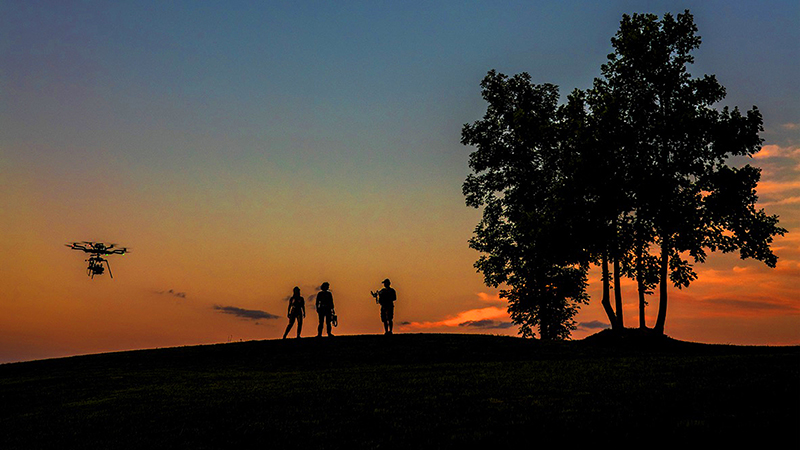
Lark
While studio-shot, All Mirrors was planned down to minute details, the production for full-color Lark, completed in under a week and lensed largely outdoors in Olsen’s hometown of Asheville, NC, was unscripted, depicting a woman in her natural element and unfiltered.
In the video, a distraught Olsen storms out of a suburban home at dusk and hitches a ride in the back of a pickup truck. “She’s leaving a bad relationship and sort of heads out on the road,” says Connor.
There are some genuinely beautiful and sweeping sequences in Lark. Olsen stands and sings on a grass-covered hilltop, an image that might remind some of an iconic scene in The Sound of Music. To capture the breathtaking beauty of nature, the creative crew elected to employ a drone, supplied by camera movement specialists VidMuze Cinema.
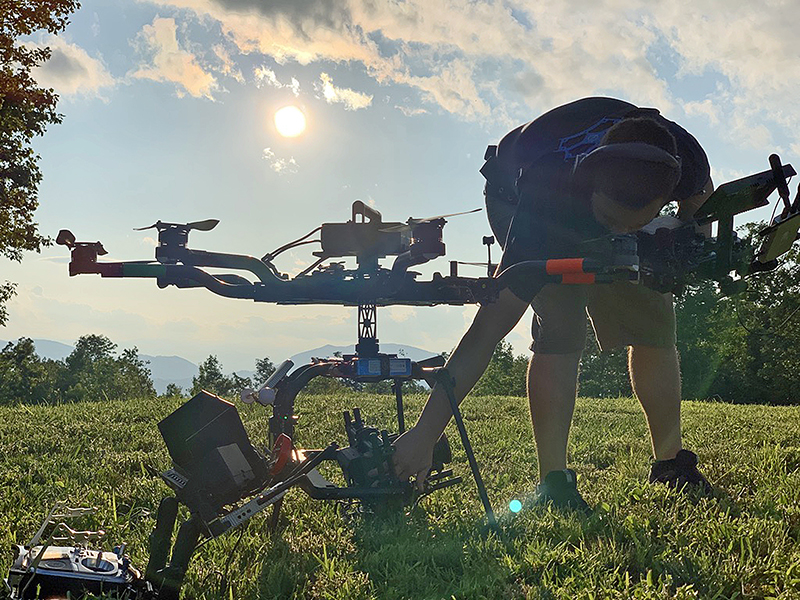
VidMuze flew their Freefly Alta 8 drone, with MoVI Pro gimbal support system and a Red Scarlet-W camera with Rokinon cinema glass. Connor had already broken her wrist earlier in the shoot and prefers not to operate drones anyway, so the three-person team of drone pilot Michael Gentilini, Jr., camera operator Ryan Atkins and safety officer Chad Cook were on site.
Via drone, a 360-degree view of the green hilltop upon Olsen stands is revealed. Then the camera pulls back, capturing Olsen as she sprints down a wide slope. “Angel really wanted a drone in the video, and I said, ‘Okay, I will do a drone, but only if I can do it in the weirdest way I can think of,’” says Connor. “I said, ‘Angel is going to chase the drone, and we’re going to try to sideswipe her face …’ The drone operators were fun and playful, and at first they were like, ‘You want to do what?’”
One of the most memorable scenes involves a bonfire, which blurs the lines between fantasy and reality. “I had been playing with ways of deteriorating and sort of bending images,” says Connor. “I built this special rig and brought it back out for this video. We don’t know what becomes reality and what is in [Olsen’s] mind. I have a lot of toys in my bag that I pull out and put in front of the camera and soften and refract and, what I say, ‘melt’ the image.”
An underwater pool scene is equally surreal. Both deep red and blue swirl around Olsen, like viscous dye. “We actually lit that,” says Connor. “I think we had two S30s panels and a Leko light cutting through that. Water runs as a theme through the video, in various capacities.”
“The underwater scenes in the dress were the most difficult,” adds Olsen. “I had to somehow seem relaxed, despite the fact that a heavy wedding dress was pulling me to the bottom. Yet those are some of my favorite shots, and somehow I do seem relaxed.”
“The color shift, among many other things, helps communicate that this is not literal,” says Nat Jencks, colorist/visual effects artist. “It’s not Angel in a pool, but being adrift, lost, reborn, [in] the void, outer space, whatever the viewer sees in it.”
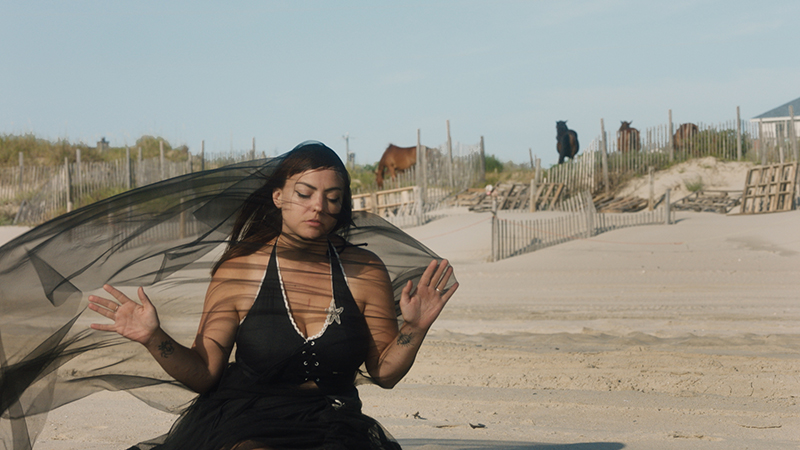
Stubborn Horses and Rain
Because Connor and Olsen decided on outdoor settings, they could neither predict nor control all aspects of the shoot. A night rain sequence positioned Olsen in front of truck headlights, raging against the camera. “We had no lights, except for the ones on the truck,” says Connor. “The rest of the lighting was me or my AC [camera assistant] holding onto a flashlight and key lighting her with it.”
Connor also admits that the crew “didn’t anticipate how exhausting the shoot would be. Angel brought a few ideas to the table, and she said, ‘We have to end with wild horses.’ We were on a very tight time schedule, and the horses were not behaving. We found one horse on the beach that would walk and the rest were hanging out by a beach house eating wild grass. By the end of the shoot, I had broken my wrist, we got rained on at times, it was all hands on deck carrying gear up and down mountains. Of course, we would get to this final moment, and none of the horses would do what we wanted them to do. Angel and I had a real nice cry/laugh on the beach.”
Given the blur between reality and dream, physical journey and inertia, not having horses run along the beach befits the theme of the main protagonist’s inability to escape the realities of her life. “It’s slightly implying that maybe she goes nowhere and has been in the back of the truck forever,” says Connor.
In videography, as in life, an adventure is often about how you get there, not the destination. “I told Angel that I wanted this to be more of a short film,” says Connor. “We have such a friendship together that maybe I can ask her to go places that maybe I can’t ask most people. And in a six-and-half minute song, you want a narrative thruway and make you want to invest in her journey.”
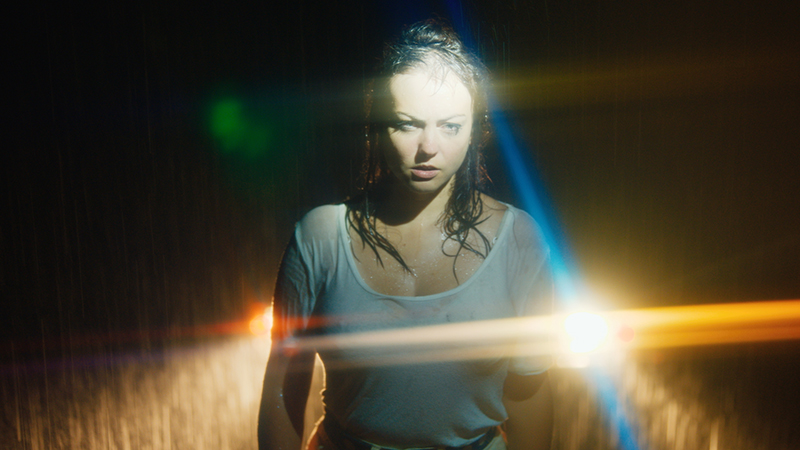
For the videos, go to www.plsn.me/AllMirrors and www.plsn.me/Lark .
Related Links: ashleyconnor.net; angelolsen.com; vidmuzecinema.com
